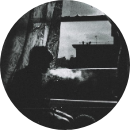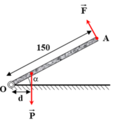Read the following passage and mark the letter A, B, C or D on your answer sheet to indicate the correct answer to each of the questions
Before the 1500’s, the western plains of North America were dominated by farmers. One group, the Mandans, lived in the upper Missouri River country, primarily in present – day North Dakota. They had large villages of houses built close together. The tight arrangement enabled the Mandans to protect themselves more easily from the attacks of others who might seek to obtain some of the food these highly capable farmers stored from one year to the next.
The women had primary responsibility for the fields. They had to exercise considerable skill to produce the desired results, for their northern location meant fleeting growing seasons. Winter often lingered; autumn could be ushered in by severe frost. For good measure, during the spring and summer, drought, heat, hail, grasshoppers, and other frustrations might await the wary grower.
Under such conditions, Mandan women had to grow maize capable of weathering adversity. They began as early as it appeared feasible to do so in the spring, clearing the land, using fire to clear stubble from the fields and then planting. From this point until the first green corn could be harvested, the crop required labor and vigilance.
Harvesting proceeded in two stages. In August the Mandans picked a smaller amount of the crop before it had matured fully. This green corn was boiled, dried and shelled, with some of the maize slated for immediate consumption and the rest stored in animal – skin bags. Later in the fall, the people picked the rest of the corn. They saved the best of the harvest for seeds or for trade, with the remainder eaten right away or stored for alter use in underground reserves. With appropriate banking of the extra food, the Mandans protected themselves against the disaster of crop failure and accompany hunger.
The woman planted another staple, squash, about the first of June, and harvested it near the time of the green corn harvest. After they picked it, they sliced it, dried it, and strung the slices before they stored them. Once again, they saved the seeds from the best of the year’s crop. The Mandans also grew sunflowers and tobacco; the latter was the particular task of the older men.
What is the main topic of the passage ?
A. The agricultural activities of a North American Society
B. Various ways corn can be used
C. The problems encountered by farmers specializing in growing once crop
D. Weather conditions on the western plains






